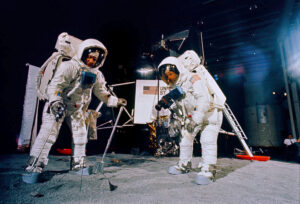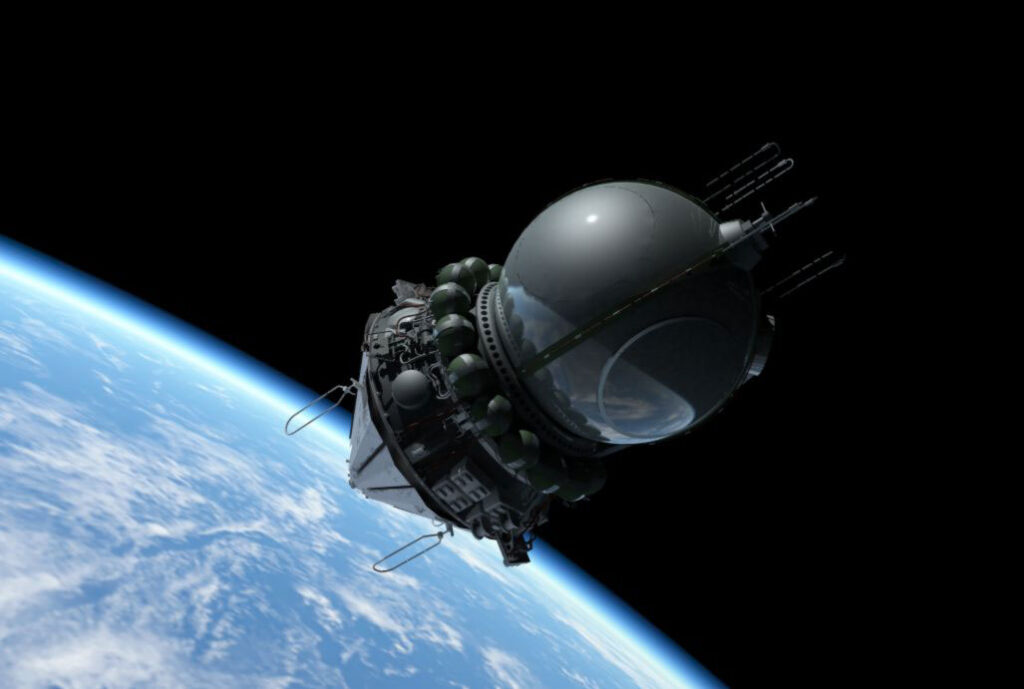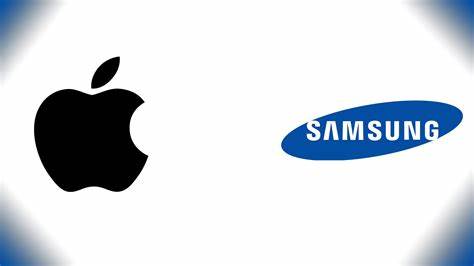Everyone who has been keenly following the geopolitical rivalry between the US and China possibly would have predicted that the measures taken by the US against Huawei would ultimately drive the Chinese tech giant to develop innovative and self-reliant alternatives for sourcing semiconductors and other critical components. Today, Huawei’s founder, Ren Zhengfei, announced the successful replacement of over 13,000 US-banned components with domestically produced versions.
This impressive feat by Huawei demonstrates the company’s resilience and adaptability in the face of adversity. It is a testament to the firm’s dedication to finding sustainable and reliable alternatives to counter the challenges imposed by the US sanctions. Not only has this move reduced Huawei’s dependency on foreign suppliers, but it has also likely accelerated the growth of the Chinese semiconductor industry.
In the past, similar instances of rivalry have pushed companies and countries to evolve and thrive. For example, during the Cold War era, both the US and the Soviet Union made significant advancements in technology due to their competition in the space race.

 More recently, South Korea’s Samsung overcame several obstacles, including stiff competition from Apple, to become a dominant player in the global smartphone market.
The Cold War between the United States and the Soviet Union, which spanned from the late 1940s to the early 1990s, was marked by intense political, military, and economic rivalry. One of the most significant areas of competition between the two superpowers was the space race, which ultimately spurred unprecedented innovation in space flight technology.
In 1957, the Soviet Union launched Sputnik 1, the world’s first artificial satellite. This achievement caught the United States off guard, prompting them to accelerate their own space program. As a result, the National Aeronautics and Space Administration (NASA) was established in 1958 to facilitate the development of cutting-edge space technology.
The space race continued throughout the 1960s, with both nations striving to outdo each other. The Soviets achieved numerous milestones, such as sending the first human, Yuri Gagarin, into space in 1961. However, the United States ultimately took the lead with the Apollo program, which successfully landed astronauts on the moon in 1969.
The intense competition between the US and the Soviet Union during the space race led to significant technological advancements that have had lasting impacts on the aerospace industry and beyond. Satellite communication, weather forecasting, and GPS technology all owe their origins, in part, to the innovations that emerged from the space race.
In the case of Apple and Samsung, the rivalry between the two tech giants has driven innovation in the smartphone industry. Apple’s introduction of the iPhone in 2007 revolutionized the mobile phone market, setting a new standard for design, functionality, and user experience. As a result, Samsung, which had primarily focused on more traditional mobile phones, had to adapt quickly to stay competitive.
More recently, South Korea’s Samsung overcame several obstacles, including stiff competition from Apple, to become a dominant player in the global smartphone market.
The Cold War between the United States and the Soviet Union, which spanned from the late 1940s to the early 1990s, was marked by intense political, military, and economic rivalry. One of the most significant areas of competition between the two superpowers was the space race, which ultimately spurred unprecedented innovation in space flight technology.
In 1957, the Soviet Union launched Sputnik 1, the world’s first artificial satellite. This achievement caught the United States off guard, prompting them to accelerate their own space program. As a result, the National Aeronautics and Space Administration (NASA) was established in 1958 to facilitate the development of cutting-edge space technology.
The space race continued throughout the 1960s, with both nations striving to outdo each other. The Soviets achieved numerous milestones, such as sending the first human, Yuri Gagarin, into space in 1961. However, the United States ultimately took the lead with the Apollo program, which successfully landed astronauts on the moon in 1969.
The intense competition between the US and the Soviet Union during the space race led to significant technological advancements that have had lasting impacts on the aerospace industry and beyond. Satellite communication, weather forecasting, and GPS technology all owe their origins, in part, to the innovations that emerged from the space race.
In the case of Apple and Samsung, the rivalry between the two tech giants has driven innovation in the smartphone industry. Apple’s introduction of the iPhone in 2007 revolutionized the mobile phone market, setting a new standard for design, functionality, and user experience. As a result, Samsung, which had primarily focused on more traditional mobile phones, had to adapt quickly to stay competitive.
 Samsung’s response was to embrace the Android operating system and develop a range of smartphones that catered to different segments of the market. Through continuous innovation and improvement of their products, Samsung managed to challenge Apple’s dominance in the market. Over the years, the fierce competition between Apple and Samsung has pushed both companies to constantly evolve their designs, features, and technologies, resulting in a rapidly advancing smartphone industry
Samsung’s response was to embrace the Android operating system and develop a range of smartphones that catered to different segments of the market. Through continuous innovation and improvement of their products, Samsung managed to challenge Apple’s dominance in the market. Over the years, the fierce competition between Apple and Samsung has pushed both companies to constantly evolve their designs, features, and technologies, resulting in a rapidly advancing smartphone industry

 More recently, South Korea’s Samsung overcame several obstacles, including stiff competition from Apple, to become a dominant player in the global smartphone market.
The Cold War between the United States and the Soviet Union, which spanned from the late 1940s to the early 1990s, was marked by intense political, military, and economic rivalry. One of the most significant areas of competition between the two superpowers was the space race, which ultimately spurred unprecedented innovation in space flight technology.
In 1957, the Soviet Union launched Sputnik 1, the world’s first artificial satellite. This achievement caught the United States off guard, prompting them to accelerate their own space program. As a result, the National Aeronautics and Space Administration (NASA) was established in 1958 to facilitate the development of cutting-edge space technology.
The space race continued throughout the 1960s, with both nations striving to outdo each other. The Soviets achieved numerous milestones, such as sending the first human, Yuri Gagarin, into space in 1961. However, the United States ultimately took the lead with the Apollo program, which successfully landed astronauts on the moon in 1969.
The intense competition between the US and the Soviet Union during the space race led to significant technological advancements that have had lasting impacts on the aerospace industry and beyond. Satellite communication, weather forecasting, and GPS technology all owe their origins, in part, to the innovations that emerged from the space race.
In the case of Apple and Samsung, the rivalry between the two tech giants has driven innovation in the smartphone industry. Apple’s introduction of the iPhone in 2007 revolutionized the mobile phone market, setting a new standard for design, functionality, and user experience. As a result, Samsung, which had primarily focused on more traditional mobile phones, had to adapt quickly to stay competitive.
More recently, South Korea’s Samsung overcame several obstacles, including stiff competition from Apple, to become a dominant player in the global smartphone market.
The Cold War between the United States and the Soviet Union, which spanned from the late 1940s to the early 1990s, was marked by intense political, military, and economic rivalry. One of the most significant areas of competition between the two superpowers was the space race, which ultimately spurred unprecedented innovation in space flight technology.
In 1957, the Soviet Union launched Sputnik 1, the world’s first artificial satellite. This achievement caught the United States off guard, prompting them to accelerate their own space program. As a result, the National Aeronautics and Space Administration (NASA) was established in 1958 to facilitate the development of cutting-edge space technology.
The space race continued throughout the 1960s, with both nations striving to outdo each other. The Soviets achieved numerous milestones, such as sending the first human, Yuri Gagarin, into space in 1961. However, the United States ultimately took the lead with the Apollo program, which successfully landed astronauts on the moon in 1969.
The intense competition between the US and the Soviet Union during the space race led to significant technological advancements that have had lasting impacts on the aerospace industry and beyond. Satellite communication, weather forecasting, and GPS technology all owe their origins, in part, to the innovations that emerged from the space race.
In the case of Apple and Samsung, the rivalry between the two tech giants has driven innovation in the smartphone industry. Apple’s introduction of the iPhone in 2007 revolutionized the mobile phone market, setting a new standard for design, functionality, and user experience. As a result, Samsung, which had primarily focused on more traditional mobile phones, had to adapt quickly to stay competitive.
 Samsung’s response was to embrace the Android operating system and develop a range of smartphones that catered to different segments of the market. Through continuous innovation and improvement of their products, Samsung managed to challenge Apple’s dominance in the market. Over the years, the fierce competition between Apple and Samsung has pushed both companies to constantly evolve their designs, features, and technologies, resulting in a rapidly advancing smartphone industry
Samsung’s response was to embrace the Android operating system and develop a range of smartphones that catered to different segments of the market. Through continuous innovation and improvement of their products, Samsung managed to challenge Apple’s dominance in the market. Over the years, the fierce competition between Apple and Samsung has pushed both companies to constantly evolve their designs, features, and technologies, resulting in a rapidly advancing smartphone industry








